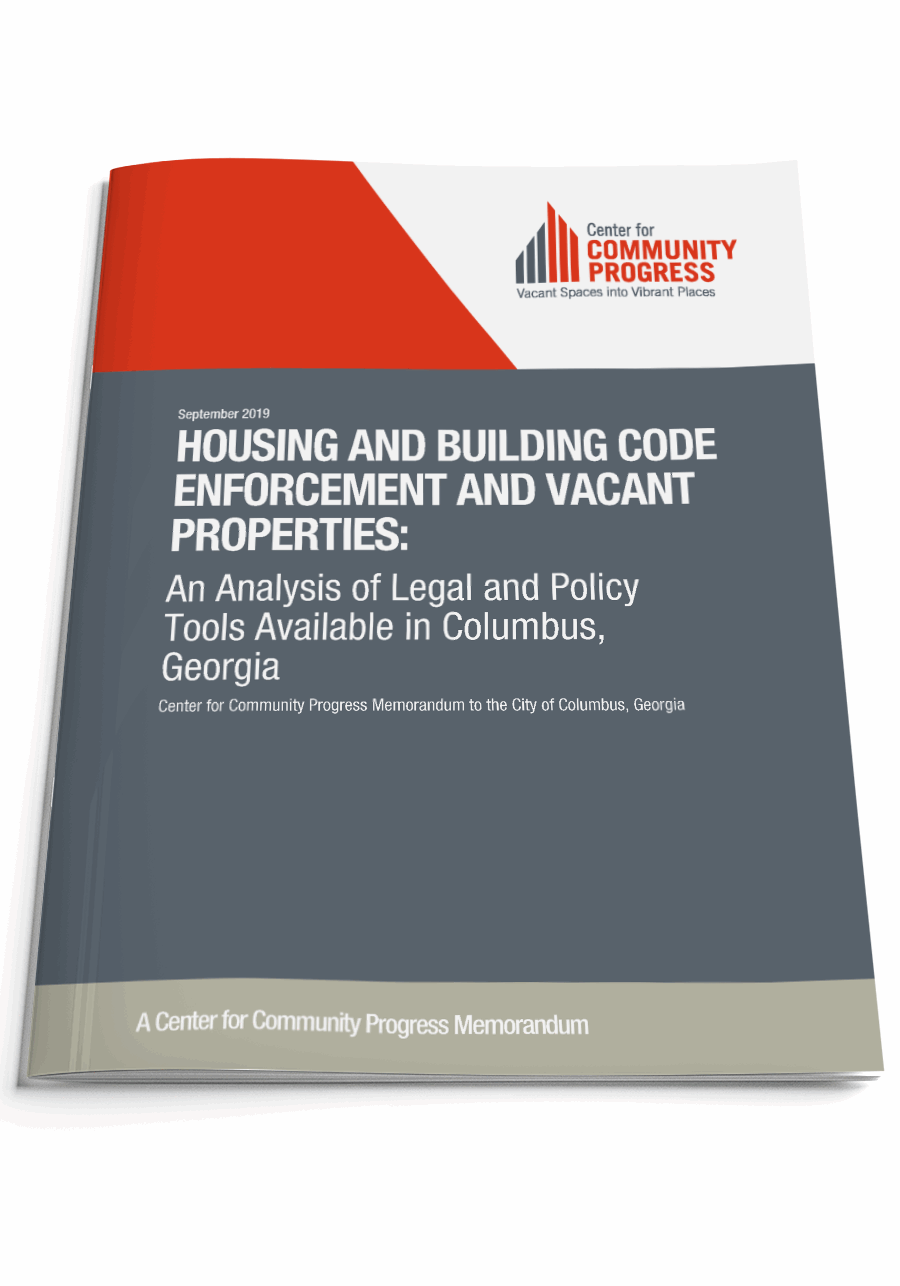Housing and Building Code Enforcement and Vacant Properties in Columbus, Georgia
An Analysis of Legal and Policy Tools Available
Topic(s): Code Enforcement System, Local Analysis
Published: September 2019
Geography: Georgia
Author(s): Center for Community Progress
Columbus, Georgia is home to approximately 200,000 residents and has been ranked in the top 100 places to live in the country. It’s a statewide leader in local government innovation and best practices; Columbus and Muscogee County were the first city and county to merge in the state of Georgia in 1971, thereby eliminating duplicative costs and providing more streamlined services to the citizens of the new Columbus Consolidated Government. Yet, like many communities in Georgia and around the country, Columbus is home to hundreds of vacant and deteriorated properties that threaten the health, safety, and wellbeing of neighbors and neighborhoods.
In June 2019, the Columbus Land Bank Authority (“CLBA”) engaged the Center for Community Progress to 1) review existing Georgia statutes, the local Columbus Code, and Columbus code enforcement policies and practices related to vacant and deteriorated properties, 2) offer observations and recommendations focused on enforcement of housing and building code liens, and 3) assess the viability of utilizing the CLBA to receive and dispose of properties acquired by the Columbus Consolidated Government through lien foreclosure or some other means. Some of our key findings were:
- The Columbus Department of Inspections and Code operates with a high degree of excellence, efficiency, and innovation
- Recoupment of demolition and other public costs is not achievable in current property markets for a number of structures demolished in Columbus or on the demolition list, but increased neighborhood stabilization and revitalization is achievable in every neighborhood
- Unless Columbus decides to enforce at least some subset of demolition liens through a forced public sale, Columbus will not be able to achieve stabilization nad revitalization in many neighborhoods home to demolished structures
- If Columbus moves forward with acquisition of a small subset of vacant and deteriorated properties post-demolition, then the CLBA, with adequate support, is primed to return those properties to productive, tax-producing uses
Informed by these insights, this memo provides an overview of state and local authority for addressing vacant and deteriorated properties thorugh housing and buildig code adoption, general lien enforcement, judicial in rem demolition lien enforcement, and blight condemnation.

Topic(s): Code Enforcement System, Local Analysis
Published: September 2019
Geography: Georgia
Related Publications
Other Related Content
Subscribe to join 14,000 community development leaders getting the latest resources from top experts on vacant property revitalization.
